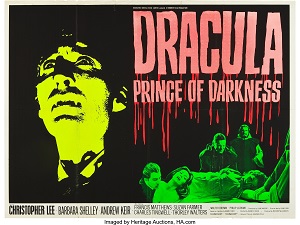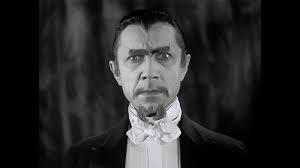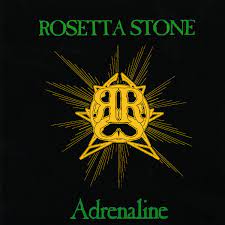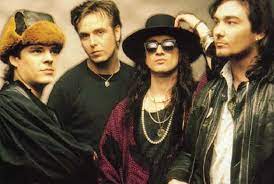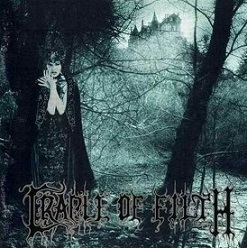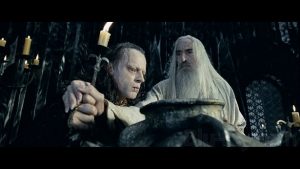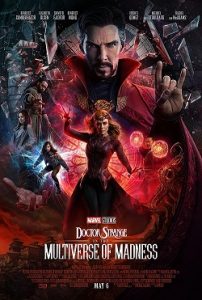
© Marvel Studios / Walt Disney Motion Pictures
Though I’ve enjoyed some of the films produced by the Marvel Cinematic Universe (MCU) in recent years, and though I was a big fan in my youth of the Marvel comics that inspired those films, until now I’ve not been tempted into a cinema to watch one of them. Usually, I’ve caught up with them courtesy of DVDs, streaming services or some airline’s in-flight entertainment system and seen them on a smaller screen. However, the other day, for the first time, I actually got off my backside, left the comfort of my apartment, made my way to the nearest cinema and bought a ticket to see the latest MCU offering, Doctor Strange in the Multiverse of Madness (2022).
There were two reasons for this. First, it’s Doctor Strange. And secondly, the film’s directed by Sam Raimi.
In the 1970s, when I was a kid and read any Marvel comic I could lay my hands on, I loved Spiderman, the Hulk, the Fantastic Four, the Avengers, the X-Men and the rest, but Doctor Strange seemed something else. The artwork by artists like Frank Brunner and Gene Colan was fascinatingly weird and psychedelic. The fact that the LSD-fuelled Summer of Love loomed large in recent memory might have had something to do with this. Also, the strip’s premise, whereby Doctor Steven Strange spent his time battling not science-fictional superpowered villains or alien beings but demons, sorcerers and other supernatural agents, gave the comic a special thrill. At the time I was living in Northern Ireland, which was heavily populated with hard-line, Bible-thumping, Christian nutjobs. To them even something as anodyne as the musical Jesus Christ Superstar (1971) was an unspeakable act of blasphemy and a portent of the coming End of Days. Thus, reading a comic strip choc-a-bloc with demons, black magic and occult imagery felt, in that environment, to a nine-year-old kid, like forbidden fruit indeed.
Meanwhile, I’ve been a big fan of Sam Raimi’s work since seeing his horror-comedy movie Evil Dead II in an Aberdeen cinema in 1987. I found Evil Dead II a brilliant mixture of crude, lowbrow slapstick – evidenced by the moment where a female character swallows an eyeball flying from an exploding head – and knowing, highbrow humour – evidenced by the scene where the hero, the ever-beleaguered Ash (played by Raimi’s long-time acting collaborator Bruce Campbell), chainsaws off his own demonically-possessed hand, then traps the severed appendage under a bucket and weighs the bucket down with a hardbacked edition of Ernest Hemmingway’s A Farewell to Arms.

© Renaissance Pictures / Rosebud Releasing Corporation
Raimi’s kinetic directing style and love of violent chaos seemed to owe as much to comic books as to anything in the cinema that’d come before him (though he was a big fan of the Columbia Pictures comedy team the Three Stooges). So, it wasn’t altogether a surprise when he directed the first big cinematic comic-book adaptation of the 21st century, the Spiderman trilogy (2002-07) with Tobey Maguire. Mind you, Raimi had already made a superhero movie, the overlooked but fascinatingly scuzzy Darkman (1990) with Liam Neeson.
Supposedly, Raimi was disappointed by the critical reaction to his third Spiderman film and decided not to make another superhero one, but couldn’t resist the invitation to direct this, the second outing for Doctor Strange – the first was released in 2016. And when Raimi lets his imagination loose on such comic-book material, which had already been pretty out-there, the results are wonderful.
The basic plotline helps too. Doctor Strange, played by the impeccably caped and goatee-ed Benedict Cumberbatch, encounters a young girl (Xochiti Gomez) with the power to travel from one universe to another. Some universes are similar to ours but with a few discombobulating alterations, while others are bizarrely and surreally different. There’s a malevolent force in pursuit of the girl, wanting to drain her of this power, and before long she and Strange are barrelling from one universe to the next with a super-villain hot on their heels. Raimi has a field-day orchestrating the backdrops to their adventures, presenting us with universes that range from one resembling Salvador Dali in a hypothetical gothic phase to one resembling a topsy-turvy Jurassic Park to one where everything comes apart like a collapsing Rubik’s cube. There’s even a gloopy universe where everything is made of paint.
Equally, Raimi is allowed to let his horror sensibilities off the leash, which makes this easily the most macabre movie to come out of the MCU. That said, with Ray Harryhausen-style lumbering trolls and flying ghouls, a partly decayed but nice zombie, and several deaths that are gruesome in a determinedly bloodless way, I doubt if this will induce nightmares in anyone over the age of ten. Actually, as I watched Doctor Strange and his new young friend rush through portals in the fabric of reality, from one universe to another, I was reminded of the climax of Evil Dead II when Bruce Campbell’s Ash gets sucked through a portal, conjured up by black magic, and is thrown back in time to medieval Europe. This sets things up for the third and final film in the series, Army of Darkness (1992), which was also full of Ray Harryhausen-style creations. (I saw Army of Darkness in a cinema too, this time when I was living in the Japanese city of Sapporo. The Japanese, picking up on the fact that Ash, when he wasn’t fighting demonically-possessed zombies, worked in a rather shit-sounding hardware store – “Shop Smart. Shop S-Mart! Got that?” – retitled the movie Captain Supermarket.)

© Dino De Laurentiis Communications / Universal Pictures
Thus, I liked the parts of the movie that show Raimi’s creative stamp, and I liked the parts that share DNA with the original Doctor Strange comic strip… But I could have done without the references to the rest of the MCU. And you get a lot of those. There are call-backs to the last two Avengers films, to the last Spiderman one, and to the Marvel TV series WandaVision (2021). Also, the cast features not only Doctor Strange regulars like Chiwitel Ejiofor’s Mordo and Benedict Wong’s splendidly imperturbable Wong, but also, later, a bunch of characters from the wider Marvel gestalt.
This didn’t mean there was an unnecessarily complicated MCU backstory that made it hard to follow what was going on – I had a working knowledge of the characters from the old comics, rather than the more recent movies, and I managed fine. It’s just that I prefer Doctor Strange, inhabiting his own little world where magic, the supernatural, the occult, demons, ghosts, etc., are realities, to be separate from the more conventional, sci-fi-style super-heroism of the rest of the Marvel canon. That was something that spoiled the first Doctor Strange movie for me too. You can imagine how peeved I was when Chris Hemsworth’s Thor turned up in its end-credits scene.
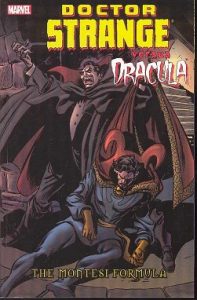
© Marvel / From previewsworld.com
And I don’t recall the original Doctor Strange comics having much to do with the other Marvel superheroes, though perhaps I just missed reading the ones that did. I do remember, though, Strange having a crossover adventure in which he encounters Dracula, who was also a Marvel character at the time, courtesy of the comics Tomb of Dracula (1972-79) in the USA and Dracula Lives (1974-76) in the UK.
Admittedly, in this new Doctor Strange movie, I enjoyed the presence of Elizabeth Olsen’s Wanda Maximoff / Scarlet Witch character, who in the MCU has chiefly been seen in the Avengers movies and the WandaVision TV show. I knew the Scarlet Witch from the comics of my childhood too and had always found her an enigma, never sure if she was a good ‘un or a bad ’un. One moment she’d be a henchwoman of the villainous Magneto, nemesis of Doctor Xavier in the X-Men; but the next moment, she’d appear as a member of the Avengers and suddenly be a good guy. In Doctor Strange in the Multiverse of Madness, this moral ambiguity is also evident – though you can probably predict which side, the dark one or light one, she ends up succumbing to. But even at the character’s worst, Olsen makes her a believable and even beguiling character. As she tells Strange, “You break the rules and become a hero. I do it and become the enemy. That doesn’t seem fair.”
To sum up: Doctor Strange in the Multiverse of Madness is at its best when it’s being Sam Raimi-esque and Doctor Strange-esque. it’s not so marvellous when it’s being Marvel-esque. Incidentally, my happiest moment came when Bruce Campbell appears in a cameo as a belligerent git. Subjected to a spell cast by Strange, and in the great tradition of Evil Dead II, he starts inflicting slapstick violence against his own face. Well, what more can you want from a film?

© Marvel Studios / Walt Disney Motion Pictures




